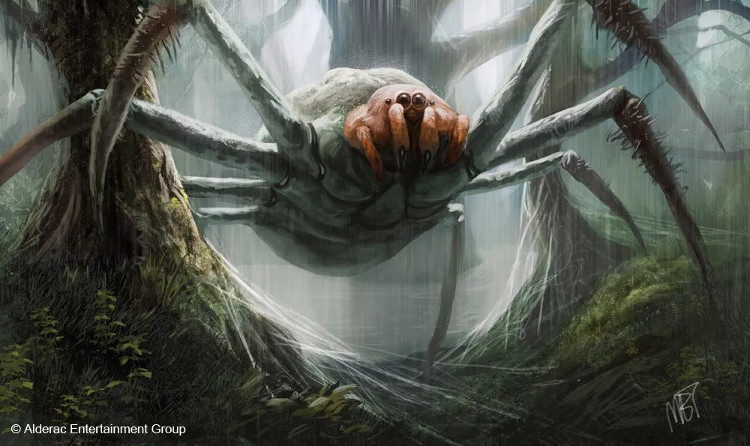Searching for traces of giant spider monsters eating humans in ancient times
Whether in the history of Earth, are there any species of spiders that possess the same size as humans?
Earth in the past has had periods of global warm weather, abundant oxygen in the air, creating conditions for species to grow suddenly.
Evidence is dozens, hundreds of millions of years ago, Earth is the domain of giant creatures, most notably reptiles. These include dinosaurs, crocodiles Deinosuchus as big as T-rex tyrants, or Titanoboa twice as heavy as the modern Anaconda legend.
So what about spiders - one of the most terrifying and excellent predators of insects? In the past, there was any spider monster with a size large enough to attack humans, like Aragog of Harry Potter, or Shelob in "Lord of the Rings" ?

Spider giant Shelob in the classic "Lord of the Rings" series.

Or Aragog's giant spider herd in Harry Potter.
The fear of a giant spider
As stated, spiders are one of the insect's best predators. Agile, the ability to trap superiors with silk, along with deadly venom, many animals have been included in the list of spider dishes.
If those qualities are preserved in a larger body, it is certain that humans cannot do them either.

Spiders are one of the insect's best predators.
Even without a spider, if a giant ant or a mantis appeared, it would be enough to cause humans to be in big trouble.
But they will never appear .
It is a fact that until now, humans have never found fossils that show the existence of a giant spider monster . The largest spider fossil was found in 2011, with a stride about 15cm long.

The world's largest spider fossil.
That number is quite modest compared to the modern "giants " like a giant hunter spider is 30cm. Compared to body size, it is also far from the Goliath spider - the largest spider species in the world today.
But why? The fact is that unlike reptiles, insects can only grow to a certain size. The reason is that they have no lungs, so they cannot receive enough oxygen.

Spider hunting bird Goliath birdeater - the largest spider species in the world today.
Without lungs, insects must form trachea tubes scattered throughout the body, with very small branches linked together. That's a way for them to transport oxygen, and obviously the parts that need more energy will have more tubes.
However, the amount of oxygen that can be transferred through these tubes is actually very limited, not comparable to lung breathing organisms. That's why even though the climate is extremely favorable, spiders or other insects cannot grow too much.

The spider's face is too big to see any .
It is also important to know that, although spiders have actually evolved to breathe by the lungs (or carry like fish), if they want to reach the size of humans, they need to have a different shape, not as in film .
The reason is because according to physics, the weight of an object is proportional to its volume. For example, a cube, when you increase the size by 5 times, the volume will increase by 5 ^ 3 = 125 times, and so will the weight.

If a spider was as big as a human, it would have been hundreds of times larger than its current size, a million times more weight. With such a scale, unless there are miracles, they can't even lift their legs, let alone spit and "sniff" people.

Permanent lies in the picture, sir .
- Giant spider revives in England
- Giant spider discharge snake meat - the science scene has never been seen before
- Search for traces of 3 giant monsters on Earth: The scientific world cannot ignore it
- The battle between spiders and bats
- Fossils suspected of being evidence of monsters eating whales
- Watch giant spider eating bird meat
- Startled at 5 giant spider species in the world
- Found a giant cave 'by digging monsters' in Brazil
- 5 scary horse monsters in ancient tales
- Crying because the giant spider monster is as big as a crab
- Giant car traces of prehistoric times
- 10 poisonous spiders are the most feared for humans
 Discovered an ancient centipede fossil 99 million years old
Discovered an ancient centipede fossil 99 million years old Discovered bat-like dinosaurs in China
Discovered bat-like dinosaurs in China Discovered a 200-year-old bronze cannon of the coast
Discovered a 200-year-old bronze cannon of the coast Discover 305 million-year-old spider fossils
Discover 305 million-year-old spider fossils